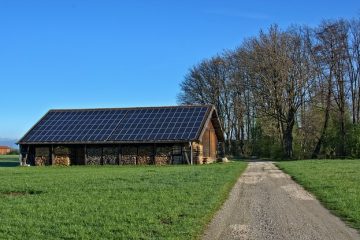Technology is playing a vital role in ensuring the safety and wellbeing of aged care residents in QLD. It’s providing increased efficiency, monitoring, communication, care and data security. Automation, wearable devices, virtual reality, artificial intelligence and cloud computing are all helping to improve aged care in QLD. It’s making the lives of aged care residents and their carers easier, safer and more comfortable.
Technology is also helping to reduce the amount of time and effort spent on administrative tasks. Automation is allowing aged care providers to streamline their workflows and improve their efficiency. Wearable devices are helping to monitor the health and wellbeing of aged care residents in real-time. Virtual reality is providing a way for aged care residents to communicate with their families and friends, even if they can’t be physically present. Artificial intelligence is helping to provide better care for aged care residents, as well as improve decision-making for carers. Cloud computing is providing a secure way to store and transfer data. All of these technologies are helping to improve QLD aged care, and they’re making the lives of aged care residents and their carers easier, safer and more comfortable.
Automation for Increased Efficiency
You can leverage automation to make aged care in Queensland more efficient! Automation can reduce the amount of time it takes to perform mundane tasks, freeing up valuable resources that can be used to help aging patients. It can also reduce the risk of errors and improve accuracy when it comes to providing care, such as following up on scheduled medication doses. Automation can also be used to improve communication between healthcare providers, patients and their families, making it easier to keep everyone informed and ensure the best care possible is provided. Automation can also be used to streamline the paperwork associated with aged care, saving time and resources. Finally, automation can be used to provide real-time tracking and analysis of patient data, allowing for better decision-making and improved outcomes for aging patients.
Wearable Devices for Safety and Monitoring
Wearable devices can provide a sense of security and peace of mind for elderly Queenslanders, allowing them to live more independently and safely. Wearable devices, such as GPS trackers, provide an easy and effective way to monitor elderly individuals in case of emergency or if they become disoriented and get lost. In addition, these devices can be equipped with sensors that monitor a person’s vital signs in real-time, which can alert healthcare providers or family members if a person’s health is deteriorating. Wearable devices have the potential to reduce falls and injuries in elderly individuals, as well as to provide early warning signs of illnesses or other medical issues. By providing elderly Queenslanders with these technologies, healthcare providers and family members can better monitor their health and safety, as well as provide the necessary interventions if needed.
Virtual Reality for Enhanced Communication
Virtual reality is revolutionizing the way elderly Queenslanders communicate, allowing them to connect with loved ones in a more immersive and engaging way. With virtual reality, elderly Queenslanders can experience a virtual environment with the help of a headset and associated hardware. This technology allows elderly Queenslanders to interact with their family and friends as if they were in the same room. They can also access various activities, such as virtual tours, that can enrich their lives in a meaningful way.
Virtual reality also has the potential to improve the quality of aged care services in Queensland. It can provide elderly Queenslanders with a more effective way of communicating with carers, allowing them to receive timely advice and assistance when needed. Additionally, virtual reality can also be used to provide elderly Queenslanders with more stimulating activities, such as virtual reality games and puzzles, which can help to improve their mental and physical health. By leveraging the power of virtual reality, aged care providers can create a more engaging and stimulating environment for their elderly clients.
Artificial Intelligence for Improved Care
Artificial Intelligence (AI) is revolutionizing the way elderly Queenslanders receive care, providing them with a smarter and more personalized experience. AI is being used in aged care facilities to automate mundane, time-consuming tasks, as well as to provide better and more accurate care plans for elderly residents. This includes monitoring vital signs, such as heart rate, blood pressure, and temperature, and providing real-time feedback to medical professionals. AI can also be used to detect signs of discomfort or medical issues, and can alert medical staff to intervene and provide the appropriate care. AI-based systems can also help reduce paperwork and administrative burdens, allowing medical staff to focus more on patient care. AI is also helping to improve communication between elderly care providers and their families, providing enhanced information and updates on the care and wellbeing of elderly residents. With AI, elderly Queenslanders can receive the highest quality of care, tailored to their individual needs and circumstances.
Cloud Computing for Data Security
Cloud computing is revolutionizing the way we protect our data, ensuring it’s kept safe and secure from malicious threats. It allows us to store data securely in the cloud, providing a layer of protection that would otherwise be unavailable. Additionally, cloud computing allows us to share data quickly and securely between stakeholders in aged care, such as doctors, nurses, and family members. This ensures that vital medical information is always available to those who need it, while also ensuring that it remains secure and protected. It also allows aged care providers to quickly analyze data and gain insights to help make better decisions and improve care for their elderly patients. By taking advantage of cloud computing, aged care providers in Queensland can ensure that their data remains secure and their elderly patients are given the best possible care.
Frequently Asked Questions
What are the costs associated with implementing these technologies?
Implementing new technologies for aged care can be costly, depending on the type and scale of the technology. Costs include the purchase of the technology, installation and setup, and ongoing maintenance. There may also be additional costs associated with training staff to use the technology, or any additional software or hardware required to make the technology compatible with existing systems. Ultimately, the cost to implement new technology for aged care will depend on the specific needs of the facility.
What are the potential risks of using these technologies?
Implementing new technologies in aged care can come with potential risks, such as privacy and security breaches, data theft, cyber-attacks, and potential misuse of sensitive information. New technologies may also cause confusion or disruption for those who are unfamiliar with it, and may not be suitable for everyone. Furthermore, the cost of upkeep and maintenance for the technology may be quite high, and the technology may not be able to meet the needs of all users, depending on their individual circumstances.
What is the timeframe for implementation of these technologies?
The implementation timeframe for new technologies in aged care is an important factor to consider, as it will allow for a smooth transition to the new system. Governments, healthcare providers, and other stakeholders must work together to determine the right timeframe to ensure the safety and well-being of residents. This includes assessing the resources needed to train staff, the cost of the technology, and the potential risks associated with its use. A successful implementation will require ample planning, communication, and collaboration.
How will the data collected from these technologies be used?
Data collected from technologies used in aged care facilities in Queensland can be used to improve the quality of care provided to elderly residents. This data can be used to monitor vital signs, track daily activities, and provide better insight into the health and wellbeing of each individual. By analyzing this data, healthcare professionals can identify potential problems, such as changes in mobility or eating habits, more quickly and take the necessary steps to provide better care for their patients.
How will these technologies be regulated and monitored?
The regulation and monitoring of new technologies is a major concern for governments, health organizations, and other stakeholders. While these technologies can offer increased safety and improved quality of care for elderly patients, they also raise questions about privacy, data security, and the potential for abuse or misuse. To ensure that these technologies are used ethically, governments and relevant organizations must develop clear regulations and guidelines for their use, as well as effective methods for monitoring and enforcing these regulations. This is especially important as the elderly population and the use of technology in aged care continues to grow.
Conclusion
Technology is a powerful tool for improving aged care in QLD. Automation can increase efficiency, wearable devices can monitor safety, virtual reality can enhance communication, artificial intelligence can provide improved care, and cloud computing can secure data. These technologies are revolutionizing the way we care for the elderly and are making a real difference in their lives. With the right implementation and use of technology, we can ensure that aged care is as comfortable and safe as possible for those in need in QLD.


